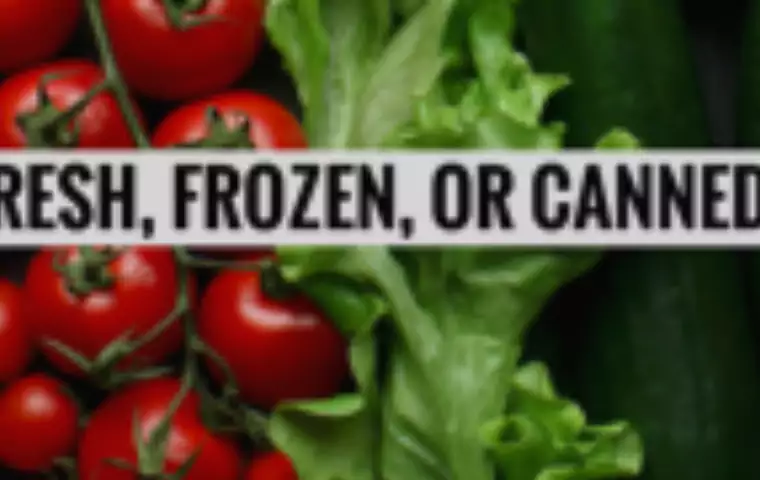We know that eating our veggies is one of the best ways to ensure that we’re getting the nutrients our bodies need to power on day after day in the most efficient manner. But with so many “versions” of these vegetables being sold throughout the various sections of our supermarkets, each coming at a different price point, it’s hard to know what the best method of purchasing these vegetables is. We’re here to break down these options for you and give you a brief analysis of what your best method of consuming your vegetables might be in any circumstance.
Canned: While canned vegetables are not unhealthy (all produce counts!), the problem with them is that in order to maintain their shelf life, preservatives may be added. Among these preservatives is salt— and for someone who might be concerned about their sodium intake, this could be the turnoff point from canned options. To avoid the added salt, look for labels that say “no salt added” or “low sodium”— and always check the ingredients. The tradeoff is the long shelf life of canned vegetables; making them great options to have on hand for when you’re really in a pinch and need your fix of veggies. Canned vegetables are great for snacking, soups, and chilis.
Frozen: Many will argue that frozen vegetables contain just as many, if not more, nutrients than the vegetable may contain in its natural state; as they don’t have a long travel time that could potentially decrease their nutrient content. When fresh vegetables aren’t in season, we would recommend frozen as your next-healthiest option— and they will keep a lot longer in your freezer than fresh vegetables will in your fridge! Just check the ingredients to be sure you’re getting what you’ve bargained for. Like canned vegetables, sometimes sodium is added; and sometimes, frozen vegetables even come in a sauce.
Fresh: If and when possible, opting for fresh vegetables is the best option— this is as close as you’ll get to the vegetable (or fruit)’s natural state, which will provide you with the most nutrients naturally. To ensure your produce is as fresh as possible (the fresher it is, the more nutrients it will contain), visit your local markets throughout the spring, summer, and fall months to get produce that travels the shortest distance possible.
Dried: Piggybacking off of all of this, while most vegetables are not offered as a dried option, many legumes are. As opposed to buying your black beans, lentils, and chickpeas in cans, another option is to purchase them dried and soak them yourself. While this method is definitely more time-consuming, there’s a certain amount of gratification that comes from soaking your own beans and cooking them to perfection, and you get to avoid all that excess sodium that gets crammed into the can along with the good stuff.



